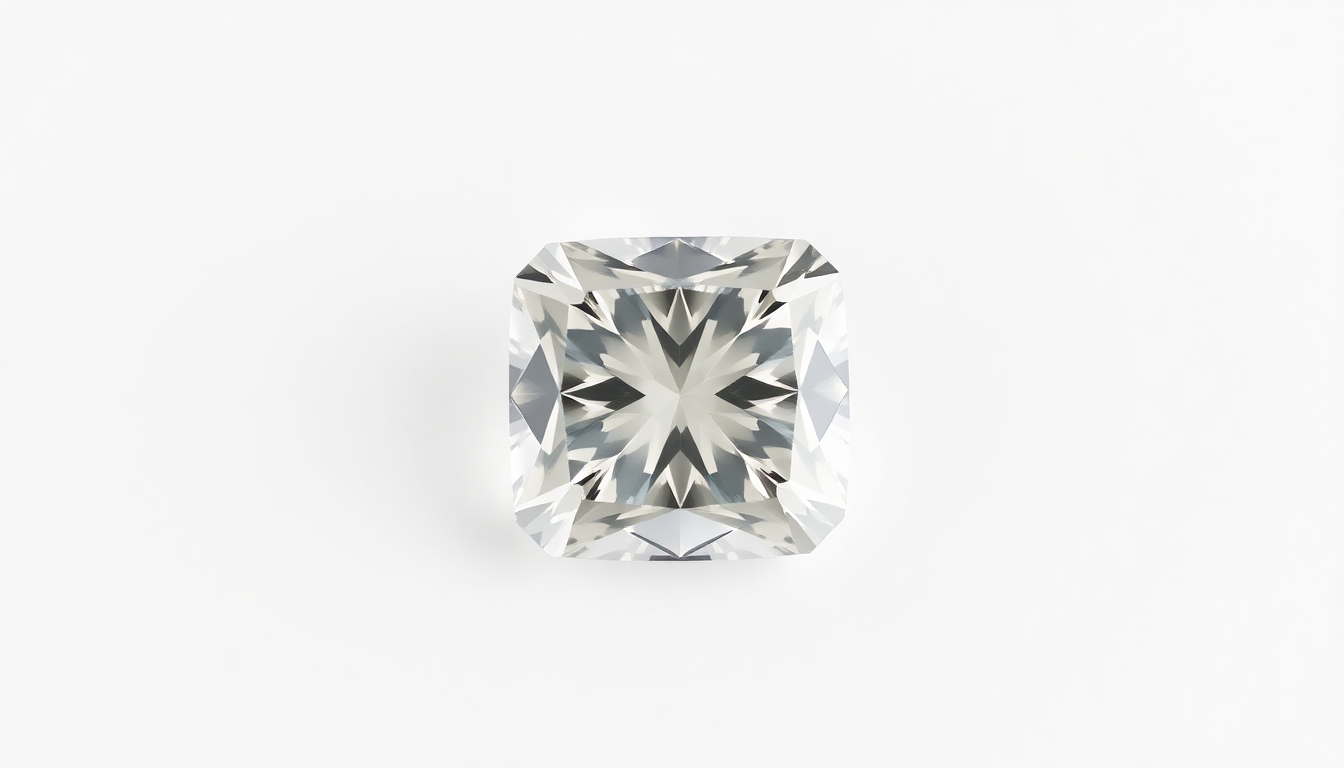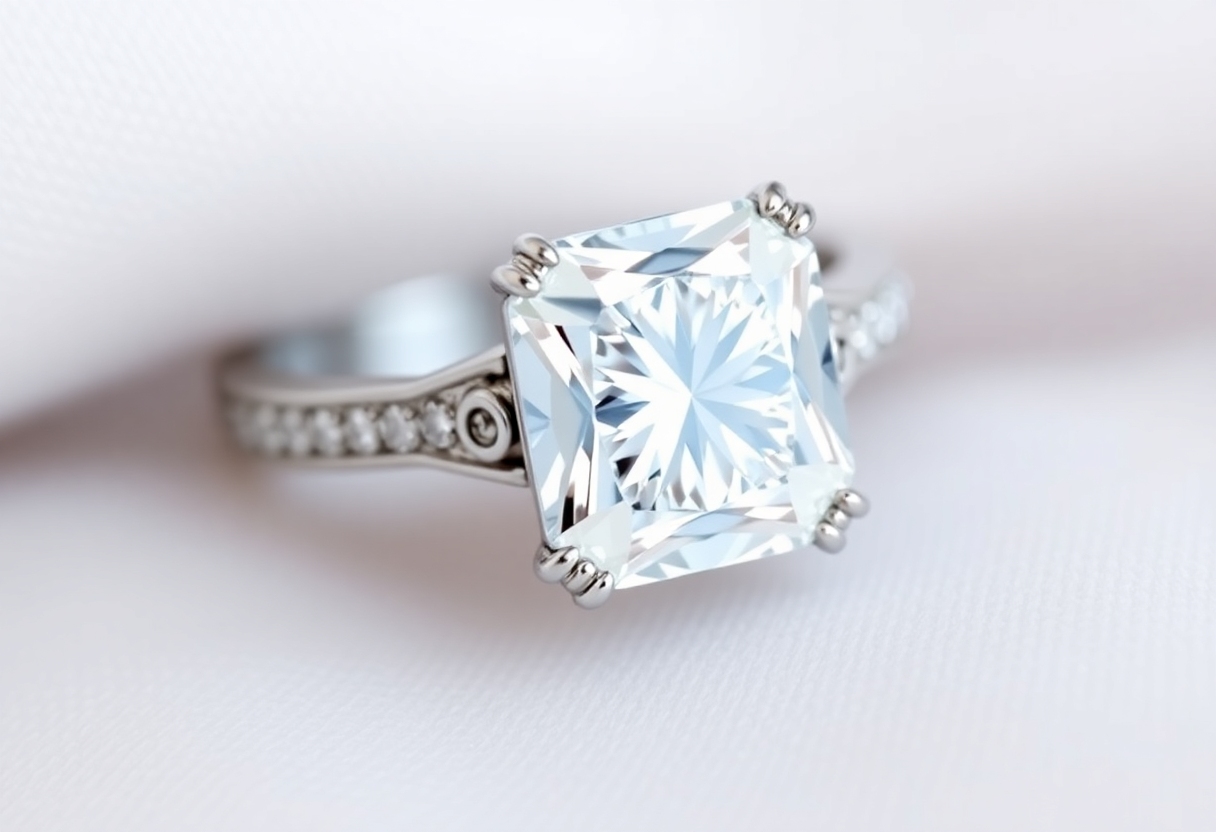What is the best diamond cut? With so many diamond cut options, it can be difficult to know the best diamond cut for your style. When you’re on the hunt for a timeless, classic diamond cut that puts a modern twist on a vintage look, whether this may be a natural diamond or a lab grown diamond, the cushion cut diamond ring is where it’s at. As the cut has evolved over time, there have been several enhancements that have only made the cut better.
These include cut angle refinements, a broader table, and a decreased cutlet, all of which serve to ramp up the cushion cut’s brilliance. The cushion cut is also on the more affordable end of the spectrum, so––what’s not to love?
What Is a Cushion Cut?
Cushion cut shaped diamonds––also known as Old European Cut diamonds––were popular in Europe and the Middle East until the 1970s.
A cushion cut is a diamond shape that boasts rounded edges that soften the look of any ring, likely contributing to its popularity because not only is it beautiful, it’s also ideal for everyday wear. A cushion cut is also sometimes called a square emerald, a square modified brilliant, or a modified brilliant.

So why ‘cushion’? The name of the cushion cut is actually derived from its appearance, which resembles an overstuffed pillow or ‘cushion.’ Its shape is defined by eight arches that form a square cross-section. It’s truly a lovely diamond cut and is available in many different diamond color grades and shades.
Cushion Cut Diamond History
The cushion diamond cut was created in stone cutter’s art, hundreds of years ago. It’s said that it first made an appearance sometime during the Georgian period.
The inspiration for the name of this vintage stone was revealed by Tiffany & Company during the Victorian Era. Once upon a time, it was even called the miner’s cut, because of the miners who meticulously cut them by hand.
The cushion cut might go by many names, but today, all modern luxury jewelry retailers likely offer some variation of the cushion cut diamond, as it’s become a highly sought-after ring cut choice for many brides-to-be. This includes the modern cushion cut diamond, elongated cushion cut diamonds, modified cushion cut diamonds, and more. After all, who doesn’t love a classic, elegant, and understated diamond cut?

Types of Cushion Cut Diamonds
Cushion cut diamonds come in various patterns and styles, making them a versatile choice for buyers who want a diamond that’s more affordable, but still looks beautiful and brilliant.
- True Cushion Cut– Arguably the most popular engagement ring styles, offering the widest of all cuts. A true cushion cut engagement ring has no acute angles between its sides. That means when you look at it, it looks like an octagon or an oval, but the cut is more square-shaped. That’s why it’s also called a square emerald or more simply, a brilliant cut diamond. True cushion cuts are the best cut for those who prefer a larger diamond engagement ring. Also, note that some jewelers may call it a double emerald cut.
- Square Cushion Cut– This is a diamond cut that’s slightly modified from the true cushion cut. It has a slight slant on the sides, which are identical to that of the brilliant cut. It’s also known as a modified brilliant or an emerald cut, with slightly elongated sides.
- Oval Cushion Cut– This is just what it sounds like, an oval-shaped cushion cut. It weighs less than a regular cushion cut diamond, yet still maintains the same appeal. Its long sides are the same as the brilliant cut, although it’s also similar to the square emerald when given some minor changes.
- Heart Cushion Cut– The heart cushion cut is a diamond that’s cut in an oval shape and is also known as a Renaissance diamond. It’s practically identical to the oval cushion cut, except that it has more of a rounded edge. Because of the rounded edges, it’s also sometimes called a princess cut.
- Marquise Cushion Cut– The marquise diamond cut offers an elongated oval shape with straight edges at both ends. This cut is designed to be ‘marquise’ in style, which is French for ‘large’ and offers a significant visual impact for those that really want to make a statement.
The Best Setting for Cushion Cut Diamonds
Cushion cut engagement rings look perfect in a wide variety of styles and settings, although halo settings do tend to be particularly flattering. However, it’s such a versatile cut that other settings work equally well, depending on what you’re looking for.
Bezel settings can be quite attractive with a cushion cut diamond, but if it wraps around the whole gem like many contemporary styles, you may end up sacrificing some brilliance because of the way it blocks the light.
A 4 prong setting, however, is excellent for a cushion cut because it can hold and protect the gem while allowing the maximum amount of light in so that no brilliance or fire is sacrificed. If you have a larger or longer cushion cut diamond, you might consider a 6 prong or double claw prong setting, but usually, a 4 prong for your diamond engagement ring is quite sufficient.
Cushion Cut Diamond vs a Round Cut
There are definitely differences between a cushion cut diamond vs round cut diamond. Round cuts are extremely popular, but cushion cuts are on the rise, especially for those who prefer more old-world, vintage charm.
Cut
Remember that a cushion cut is a unique diamond cut with rounded edges, but the shape itself isn’t round. Meanwhile, a round cut is more traditional and may be considered the gold standard when you’re considering different diamond cuts for jewelry like diamond engagement rings.
Shape
Cushion cut diamonds are mostly square or rectangular in shape, while a round cut is just what it sounds like. However, there are other shapes as well that aren’t ‘round.’ Pear, marquise, and heart shapes are excellent examples of diamonds that aren’t round.
Light Performance
A cushion cut diamond outputs light more evenly. Therefore, it provides brighter light when compared to a round diamond. Round diamonds tend to be described as having more ‘brilliance’ while cushion cut diamonds have more ‘fire.’ So you have to decide which you prefer more – brilliance or fire in your diamond.
Cut Quality
A cushion cut diamond is more complex to cut accurately than a round diamond, which results in fewer quality diamonds. Therefore, it is easier to find round diamonds with a poor cut and shape in the market than a cushion cut. It’s also why round cuts tend to be priced higher.

Clarity
While all shapes of diamonds have a clarity range, the round shaped diamond is more transparent than any other shape. Therefore, it’s important to look for one that doesn’t have any inclusions or imperfections that are visible to the naked eye.
Facets
Round cut diamonds present more facets than a cushion cut diamond, making it a more challenging cut with more wasted material. While the many facets do add to its brilliance, that can also sometimes mean more damage on the surface of the stone, which ultimately results in less light output. Again, it’s a challenge to create a great round cut.
Price
A round cut diamond is on the higher end of the pricing scale than a cushion cut diamond, largely because it requires so much skill and precision to cut and polish. Plus, all that rough diamond waste when making the cut is also factored into the price. If you are wondering, “what is the most unique engagement ring settings?” check out our blog.
Differences Between Princess and Cushion Cut Diamonds
One of the biggest differences you’ll notice between a cushion cut and a princess cut is that a cushion cut has rounded edges.
While both gems can be a square or rectangular shape, a princess cut has sharp corners and is more often a square shape with a symmetrical profile. A cushion cut can be square or rectangular, and some are such a long rectangle, with rounded edges they almost appear to be oval.
A princess cut diamond top is usually smaller than the bottom. However, a cushion cut diamond has an equal depth on both sides.

Should You Buy a Cushion Cut Diamond?
If you want a truly distinctive diamond, we can’t recommend a cushion cut highly enough. Cushion cut diamonds have a unique appearance that makes for an eye-catching engagement ring. Not to mention, they’re easier to polish and clean than other cuts, plus they are more durable and tend to last longer.
So, whether you’re a fan of rings with a vintage flair, or prefer a cushion cut with a more modern setting, you really can’t go wrong. Both style preferences can be honoured when you choose a well-designed cushion cut diamond!









Leave a Comment